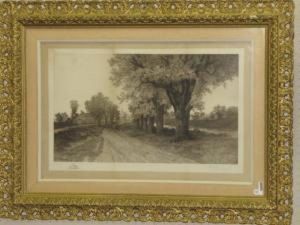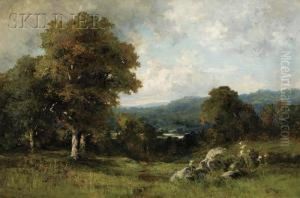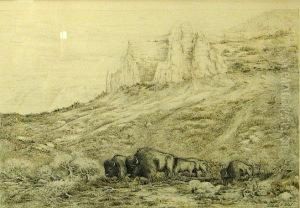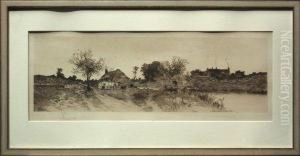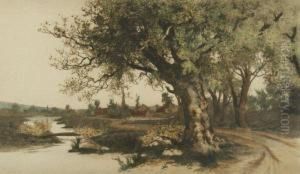Ernest C. Rost Paintings
Ernest Christian Rost was an American artist and etcher, born in 1867. Rost developed a keen interest in art at a young age, which led him to pursue a career that bridged the gap between the 19th and 20th centuries, a period marked by significant transformations in the art world. Despite the scarcity of detailed biographical information, Rost's work has been appreciated for its unique style and contribution to the American etching revival of the late 19th and early 20th centuries.
Rost's artistic journey was significantly influenced by the picturesque American landscape and rural scenes, which he captured with remarkable detail and sensitivity. His etchings often depicted serene landscapes, pastoral scenes, and rustic American life, embodying a sense of nostalgia and a deep appreciation for the natural environment. Rost's technique was notable for its precision and ability to convey texture and light, characteristics that made his work stand out among his contemporaries.
Throughout his career, Ernest C. Rost was actively involved in the art community, contributing to the popularity of etching as a respected form of artistic expression. His works were exhibited in various galleries and became part of several prestigious collections. Despite the overshadowing fame of other artists of his time, Rost managed to carve out a niche for himself, especially among collectors who appreciated the quiet beauty and meticulous detail of his etchings.
Rost's legacy, while not as widely recognized as some of his peers, continues to be appreciated by art historians and collectors who value the etching revival period and its contribution to American art history. His dedication to capturing the essence of American landscapes and rural life has left an indelible mark on the art world, ensuring his work remains a subject of interest and admiration. Ernest C. Rost passed away in 1940, leaving behind a body of work that continues to be celebrated for its artistic merit and historical significance.
